This is the first in a series of articles about food safety planning, audits, and writing food safety plans. Click here for additional resources and information on MDA Good Agricultural Practices (GAP) Certification Cost Share program. Click here for additional resources on Fruit, Vegetable, Grain, and other inspection programs within the MDA.
Guest Authors: Michele Schermann R.N., M.S., Department of Horticultural Science, and Annalisa Hultberg, M.S., Extension Educator, On-Farm Food Safety, University of Minnesota Extension
Before planting time is “planning time.” Planning for crops, markets, and food safety! We frequently get calls and emails from growers wanting to learn more about getting their farm “GAP-certified.” A few things to consider: It is your product (e.g. cucumbers, green beans, tomatoes) that gets the audit, not the farm. The audit also occurs during the harvest and packing activities related to that product. You won’t be able to have an audit done ahead of time when you are less busy; it must be conducted while the product is growing and the auditor can see you harvest and pack the product.
As a reminder, Good Agricultural Practices (GAPs) are a voluntary set of produce safety standards and practices intended to minimize microbial contamination during the growing, harvesting, and packing of produce. GAPs, which have been updated in recent years, include guidelines for farm worker health and hygiene, toilets and handwashing, manure management, irrigation and wash water quality, produce storage and handling, pest and wildlife management, transportation, product track-back, and other activities.
A GAP audit is when an inspector from the Minnesota Department of Agriculture (MDA) comes to your farm with a checklist to verify that you have implemented and are following Good Agricultural Practices during the growing, harvesting, packing, storage, and transportation of your product. The MDA wants to promote agriculture and support farmers in Minnesota. Their goal is to validate safe practices for growing food, not to unnecessarily hassle you. The department even has a GAP Cost Share program that can assist with certification costs.
If you are even thinking about getting your product certified you may have already started your food safety plan and implemented some of the practices. Here are four things to consider before requesting an audit:
- Do you have a buyer who is requiring you to have a GAP audit before they will purchase your product? If you are selling to a wholesale distributor or large grocery chain, they will most likely require an audit. If you are selling to a food hub, school, hospital, or other institution, they may require an audit but they may accept other verification such as providing written food safety plan and some records and documents, and they may also do a site visit to your farm.
- How many products will you have audited? If you have multiple products that need to be audited you may be able to have them audited at the same time if they use the same harvesting and packing processes. The items that most often required an audit are those that are often eaten raw or have been implicated in foodborne illness outbreaks in the past—examples are leafy greens, tomatoes, cantaloupes, berries, and herbs.
- What kind of audit is your buyer requiring? There are multiple audit schemes. The costs will vary. If you are just starting the process and this is the first time you will be having an audit, start with the basic USDA GAP audit. The most current USDA GAP audit checklist is available on the USDA website: https://www.ams.usda.gov/services/auditing/gap-ghp/audit. The checklist is everything the audit will cover.
- Do you have your food safety plan written? You must have a written food safety plan that covers the policies and practices that represent what you do on your farm. The MDA auditors say it’s easier for them if you write your plan in the same order as the USDA GAP Audit Checklist. Be sure to include the Standard Operating Procedures (SOPs) and records as appropriate for your farm. Food safety plan templates are available from many sources and a favorite is the “Food Safety Plan 4 You” template created by the University of Minnesota On-Farm GAP Education Program.
Yes, food safety can seem like a lot of work as you are getting started on your plan. BUT, farmers who have written and use their plans say that once it is created it really helps them with efficiency and worker training. Food safety should be part of your entire business plan and can help improve the quality and safety of your fresh produce, expand your markets, and enhance your brand.
Check our website for upcoming GAPs workshops http://safety.cfans.umn.edu/. If you have any questions about your food safety plan or audits please send us an email to safety@umn.edu or give us a call at 612-624-7444.
